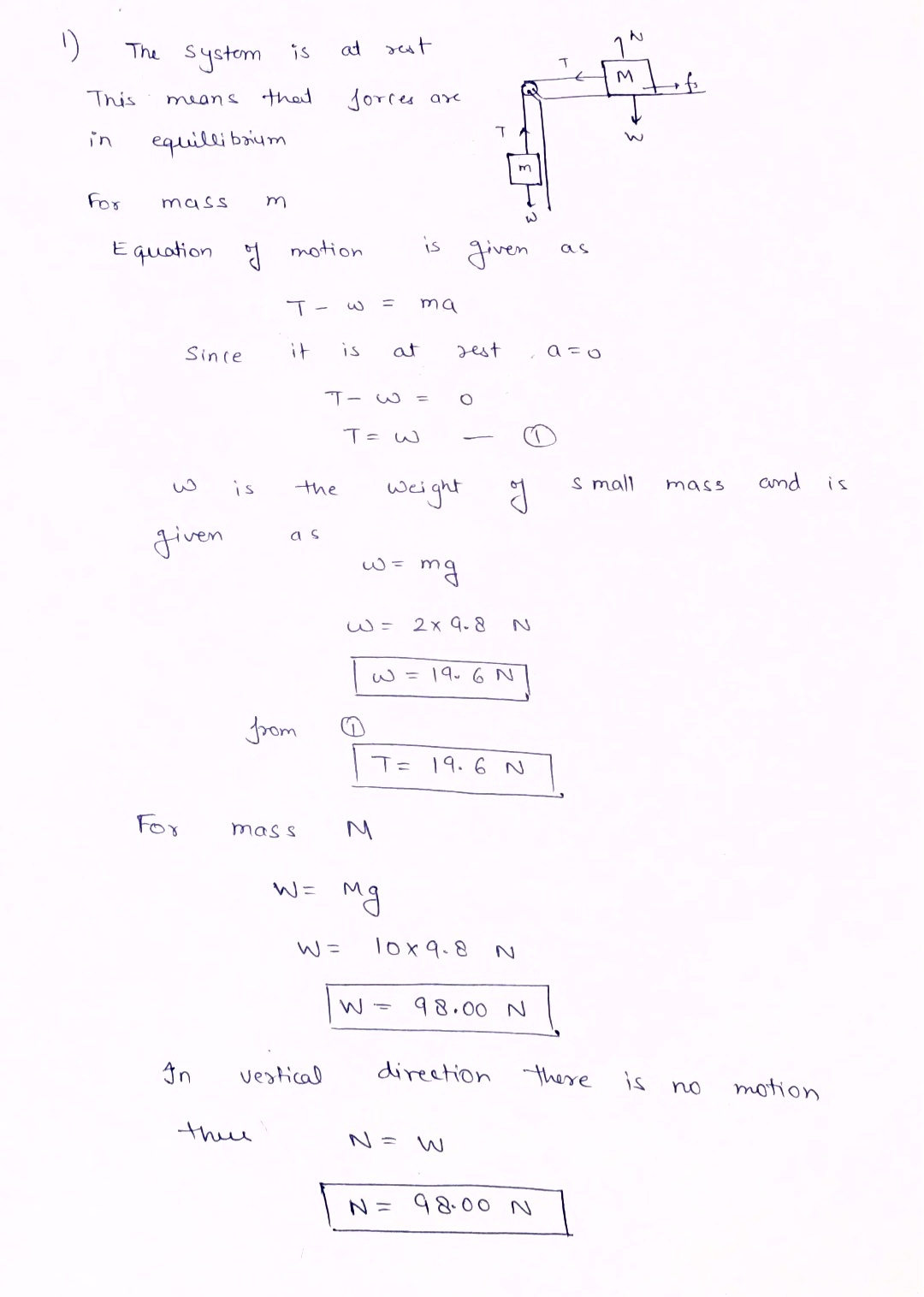Please find the magnitude of each of the forces shown. (total of 6 forces)
Related questions
Question
Please problem one using the data given. Please show all work and circle your answer. Thank you

Transcribed Image Text:**Problem #1:**
Two masses are connected by a light string going through a frictionless pulley. Due to the large force of static friction \( f_s \) between the block and the table, the system remains at rest.
Please find the magnitude of each of the forces shown. (Total of 6 forces)
- \( M = 10.00 \, \text{kg} \)
- \( m = 2.00 \, \text{kg} \)
**Diagram Explanation:**
- A frictionless pulley is attached, over which a string passes.
- One end of the string is connected to a mass \( m \) hanging vertically.
- The other end is attached to a mass \( M \) resting on a horizontal surface.
- The forces shown in the diagram are:
- \( T \) (Tension) acting along the string in both sections.
- \( w \) representing the weight of the hanging mass \( m \).
- \( W \) representing the weight of mass \( M \) on the table.
- \( N \) representing the normal force acting upward on mass \( M \).
- \( f_s \), the static friction force, acting horizontally opposite to the direction of potential movement of mass \( M \).
The goal is to calculate the magnitudes of these forces while noting the system remains at rest.
Expert Solution
Step 1
Answers are enclosed in boxes.

Step by step
Solved in 2 steps with 2 images
